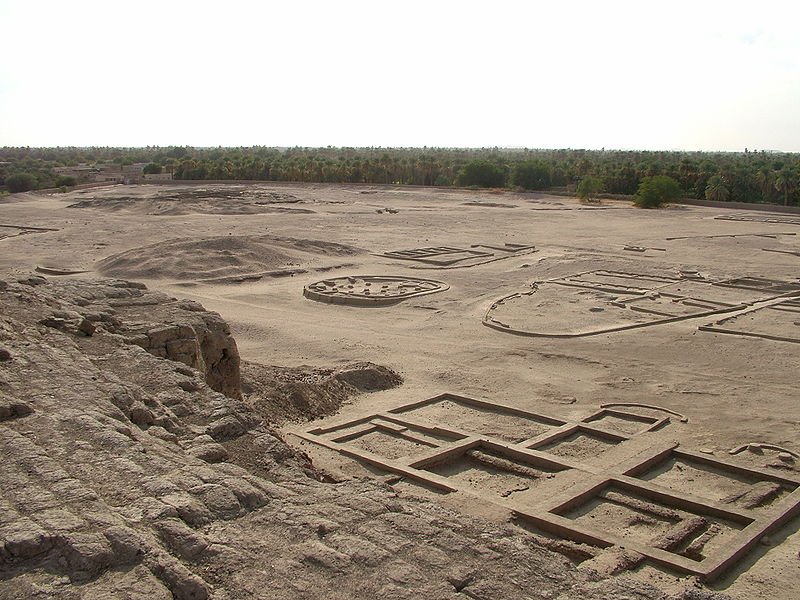Unknown Round Temples At Kerma May Solve Some Of Africa’s Ancient Secrets
– The round temples in the ancient kingdom of Kerma, Sudan are fascinating. Built thousands of years ago, they are unlike any other buildings in Africa and they don’t seem to resemble other structures in the world. Who built these ancient temples? Can the round temples solve some of Africa’s secrets?
Known to the Egyptians as the land of Yam, the ancient kingdom of Kerma is located about a mile and a half from the Nile. Today, it’s recognized as the most ancient kingdom in Saharan Africa beginning about 2500 B.C.

The kingdom of Kerma is composed of two significant areas that include a large necropolis where several interesting archaeological discoveries were made over the years. In many of the graves, scientists found wealth in gold, ivory, metal, faience and other exotic items.
The ancient round temples make mysterious kingdom of Kerma an even more interesting ancient site that has been neglected for long.
Veteran archaeologist Charles Bonnet, who has unearthed the tree ancient temples believes they will promises to throw new light on Africa’s buried ancient past.
According to Bonnet, the round temples at Dogi Gel- “Red Hill”, located just several hundred meters from Kerma, where Bonnet and his team have been digging for decades are unlike anything so far discovered.
“This architecture is unknown … there is no example in central Africa or in the Nile Valley of this architecture. At Kerma the architecture is square or rectangular shaped and here just a kilometer away we have round structure. We don’t know of many round temples in the world… we don’t have examples to compare,” Bonnet said.
In Zimbabwe, there are several conical ancient towers that lack of doors, windows and other openings, but they do not resemble the round ancient temples at Kerma that have been dated from 1,500 to 2,000 B.C.
How built the Kerma towers remains unknown. Nobody knows this architecture… It’s completely new,” Bonnet said, adding that the new structures did not resemble Egyptian or Nubian architecture — two ancient archaeological influences in the region.
“There are no roots today in Africa and we have to find these roots… this is the secret of Africa.”
We know that a highly sophisticated and powerful civilization in Nubia, was once located in the northern Sudan. The Nubian Empire left behind marvelous ancient pyramids, beautiful avenues of animals and statutes, temples and colonnades, but these people did not construct the ancient round temples at Kerma.
During this latest dig, Bonnet said, he also discovered “enormous fortifications” at Dogi Gel, an indication that much more awaits to be discovered at the site.
“That means this part of the world was defended by a coalition, probably of the king of Kerma with people coming from Darfur and from central Sudan” against ancient Egyptians, who were interested in controlling trade and commerce in central Africa.
Bonnet has excavated in Sudan for more than 50 years and he feels there is still so much we don’t know about this part of the world.
We are discovering a new world and this is the African world. This country is enormous, it’s the heart of Africa with many influences coming from the Red Sea, from Darfur and from Kordofan. We have here extraordinary history of the world, maybe after some years we will have Sudanology as strong as Egyptology, “Bonnet said.
These finds helped to prove that Sudan was more than just a satellite of neighboring Egypt.
There is no doubt that Sudan has been very neglected in archaeological terms. Perhaps the ancient round temples at Kerma will help to shed more light on Sudan’s t mysterious and fascinating past and solve someof Africa’s ancient secrets.



 Creators of mankind
Creators of mankind Description of “Tall white aliens”
Description of “Tall white aliens” Where they came from?
Where they came from? About hostile civilizations
About hostile civilizations The war for the Earth
The war for the Earth “Tall white aliens” about eternal life
“Tall white aliens” about eternal life Video: “Nordic aliens”
Video: “Nordic aliens” Aliens
Aliens Alien encounters
Alien encounters The aliens base
The aliens base UFO
UFO Technology UFO
Technology UFO Underground civilization
Underground civilization Ancient alien artifacts
Ancient alien artifacts Military and UFO
Military and UFO Mysteries and hypotheses
Mysteries and hypotheses Scientific facts
Scientific facts


















